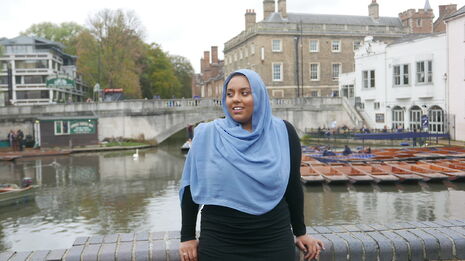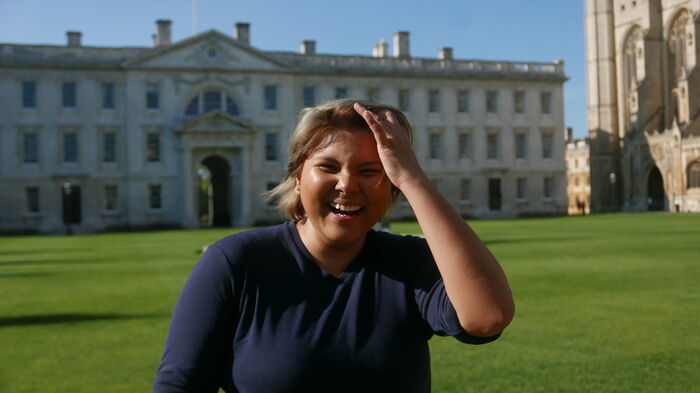Rethinking the canon: the underdogs of literature
Columnist Jonathan Chan talks to Nusrath Tapadar about the limitations of the composition of the English tripos

It is not difficult to spot Nusrath Tapadar (Second Year, St. Catherine’s) at an English lecture on any given day. She is one of two students in her cohort who has chosen to wear a hijab as an outward sign of her Muslim faith. Having grown up in in East London surrounded by South Asian British students and having also received a prior education in an Islamic school, perhaps it is inevitable that she has found the English Tripos to be insular.
The things that have made her feel alienated since arriving in Cambridge are momentarily eclipsed by a glimpse of her every day in the writing of Monica Ali
For Nusrath, the absence of people of Bengali origin in the literature she’s studied has been difficult to digest. Though Bengalis constitute one of the biggest ethnic groups in the world, very few texts in English reflect their lived experiences with nuance. “It often feels like the university believes that brown writers only exist in the postcolonial section,” argues Nusrath. She contends that it is statistically unlikely that so few stories would exist about such a humungous ethnic group, but their conspicuous absence has made it difficult for her to relate to the Tripos.
The faculty’s overwhelming focus on white writers, Nusrath believes, stems from the assumption that accepting works by the underdogs of literature will detract from the ‘existing greats’. The underdogs in question pertain to voices not commonly championed within the confines of the academy– writers of minority ethnicity, religious affiliation, or less privileged socioeconomic status. “This is not really about distancing one writer or the other, but providing equal opportunity for different writers to be read,” she posits. By expanding the range of prescribed texts on the curriculum, not only will this enrich an understanding of what great literature is, but this will also allow students and faculty to draw on a broader range of intellectual traditions not often addressed in the Western canon.
In particular, the rich tapestry of Islamic thought, history, and theology is rarely reflected in the texts on the Tripos, often placing Nusrath in awkward critical positions. Across various texts on the English curriculum, particularly in medieval literature, Muslims are often portrayed in a hostile manner, either as ornate and aristocratic sultans or combative, bloodthirsty ‘savages’. When tackling an essay about Geoffrey Chaucer’s Man-of-Law’s Tale, Nusrath was quick to identify portions of the text where the Sultan of Syria and his court convert en masse from Islam to Christianity, teasing out the accompanying tensions between obeying a political leader and retaining a sense of religious autonomy. Her supervisor later said that she had never considered such a viewpoint before. By addressing often-overlooked aspects of canonical texts, as Nusrath has, this provides the basis of innovative analysis that can serve to address the misconceptions on which entire schools of thought are built.
This is not really about distancing one writer or the other, but providing equal opportunity for different writers to be read
In addition, Nusrath’s sensitivity to issues surrounding race, religion, and class has allowed her to approach supervisions and texts with what she describes as a ‘non-generic perspective’. For example, in critical theory supervisions on poetry, she recalls reading passages such as ‘Even the Indians who are base and savage can appreciate poetry’. While acknowledging that such discussions do not hinge on race, Nusrath argues that it is difficult to discount such racial undertones. “It’s not enough to uncritically accept a text just because everyone was obviously racist in 1700,” she remarks. The glossing over of such concerns often functions as an invalidation of individual personhood, as if to pretend that such processes of dehumanisation are not consonant with the lived experiences of people today.
Nusrath notes the need to understand the sociocultural context in which pieces of literature and criticism are produced, particularly when considering their intellectual and ideological foundations. In many instances in the Tripos, this often means the necessity of confronting colonial and imperial paradigms across history. In the 17th century novella Oroonoko, for example, Nusrath notes that its writer Aphra Behn leads readers toward empathising with the African Oroonoko because he has European facial features. It is in light of such explicit displays of racism within this prescribed literature that Nusrath notes, “It was sort of inevitable that I would be unapologetically banging on about race,” she says. Yet, the questions she brings up surrounding race have often been treated as tangential and irrelevant to discussions. This has lead to her feeling resigned to not being taken seriously academically.
She notes the need to understand the sociocultural context in which pieces of literature and criticism are produced
Perhaps it is with some relief that Nusrath has been able to focus on urban fiction set in London for her dissertation on modern literature. In urban fiction, the urban setting figures prominently in the narrative, as is the case with contemporary London novels that heavily feature council estates. While reading articles focused on the relationship between architecture and literature for her dissertation, Nusrath noted the ways in which contemporary literature has begun to reflect the strategic economic policies that have lead to the concentration of migrant communities in ghetto areas. This urban fiction gives a voice to working-class minority communities ordinarily absent in the literary sphere.
Nusrath’s fascination with this genre stems from its historical transformations: as opposed to 18th century accounts of the working class written by observers such as Charles Dickens and Thomas Hardy, the proliferation of education has resulted in such accounts written by the working class itself. Such stories reveal the inextricability of class and race, particularly in the way that structural racism is often perpetuated along class lines in the British context. Having grown up in a part of London deeply affected by this, these concerns continue to resonate with Nusrath.
Specifically, Nusrath has decided to work on Monica Ali’s novel Brick Lane, which is set in the heart of London’s Bangladeshi community, not unlike the one she grew up in. “When you read or interact with the world, you look for bits of yourself in it,” Nusrath remarks. It is the small details in the novel have most resonated with Nusrath. She recalls the dedication written to Ali’s appa at the beginning of the novel, the same word Nusrath uses to address her own father. She recalls the use of the word moyna, a term of endearment, in dialogue between a mother and daughter. The Bengali word, which refers to a type of bird, also translates to ‘sweetheart’. “Before I read that, I never heard it used anywhere other than in my family,” she mentions with a measure of tenderness.
For the unacquainted, she remarks that the novel will be mind-blowing, an exposure to a new kind of story that can only serve to expand the possibilities of what a novel should look like. For Nusrath, it provides a special, personal resonance. The things that have made her feel alienated since arriving in Cambridge– her religious background, her physical appearance, her decision to wear her hijab– are momentarily eclipsed by a glimpse of her every day in the writing of Monica Ali. By incorporating Brick Lane into her academic journey, Nusrath is staking her claim, as well as that of many others, in the English Tripos. In a place where they rarely seem to exist, Nusrath is helping the underdogs of literature to receive the attention they deserve.
 Interviews / You don’t need to peak at Cambridge, says Robin Harding31 December 2025
Interviews / You don’t need to peak at Cambridge, says Robin Harding31 December 2025 News / Unions protest handling of redundancies at Epidemiology Unit30 December 2025
News / Unions protest handling of redundancies at Epidemiology Unit30 December 2025 Comment / What happened to men at Cambridge?31 December 2025
Comment / What happened to men at Cambridge?31 December 2025 Features / ‘Treated like we’re incompetent’: ents officers on college micromanagement30 December 2025
Features / ‘Treated like we’re incompetent’: ents officers on college micromanagement30 December 2025 Theatre / We should be filming ADC productions31 December 2025
Theatre / We should be filming ADC productions31 December 2025









